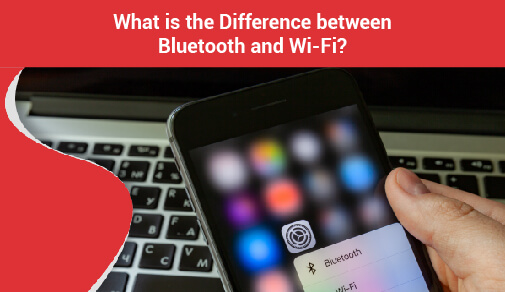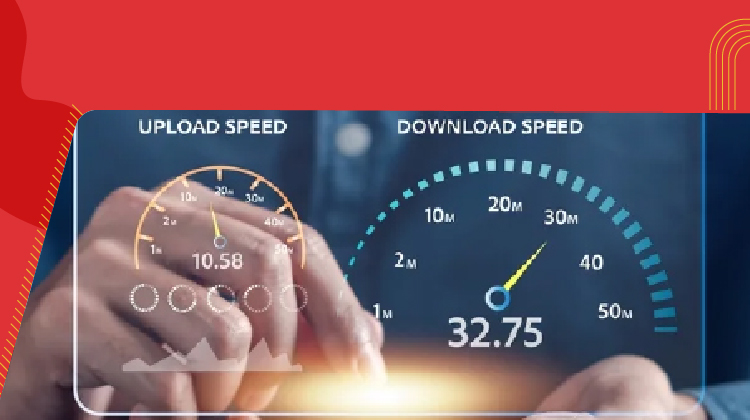What is the difference between bluetooth and wifi?
Friday, Sep 06, 2024 · 4 minutes


GENERIC
Friday, Sep 06, 2024 · 4 minutes
Wireless technologies such as Bluetooth and Wi-Fi are essential but serve different purposes. Bluetooth is ideal for short-range communication, connecting peripherals like keyboards and headphones within a 30-foot range. It is especially useful for wearables and IoT sensors due to low power consumption. On the other hand, Wi-Fi is best for providing internet access over larger areas in homes, offices, and public spaces, offering longer ranges and higher data transmission rates. Wi-Fi enables faster speeds in modern networking solutions, while Bluetooth focuses on low-power operation and device-to-device interactions.
Bluetooth, a short-range wireless technology, makes data sharing across small distances easier. It functions in the 2.4 GHz ISM band and was first created as a wire substitute for personal area networks. Bluetooth uses fast frequency switching to reduce interference using a frequency-hopping spread spectrum (FHSS). This technology allows for smooth connections between gadgets and supports various applications, including smart home appliances and wireless headsets. Modern electronics are almost always equipped with Bluetooth due to their low power consumption and user-friendliness, which makes data transmission close dependable, secure, and efficient.
A master in a piconet can link to up to seven slaves using the master-slave structure used by Bluetooth devices. For safe communications, passkeys must be exchanged during pairing. Once paired, devices share data over Bluetooth profiles, such as file transfer and audio streaming, increasing application versatility.
A wireless router linked to an internet modem distributes a shared internet connection over a Wi-Fi network. By serving as a central hub, the router allows connectivity without needing physical cable connections by broadcasting the internet signal to all Wi-Fi-enabled devices within its coverage area. As long as the devices are within the router's signal range, this flexible design allows numerous devices in homes or businesses to access the internet simultaneously. Since Wi-Fi networks provide users with convenience and mobility across several devices and locations within the network's coverage area, they have become indispensable for modern networking.
To allow devices with Wi-Fi adapters to connect within range, Wi-Fi networks rely on access points (APs) to broadcast signals. Users must choose the network's SSID to connect and input security information like WPA2 passwords. Through APs, Wi-Fi runs in infrastructure mode, making connecting to LANs and the internet easier. On the other hand, direct connections between devices are possible in ad-hoc mode, even in the absence of an AP. This adaptability provides smooth connectivity for laptops, smartphones, and Internet of Things devices, supporting various applications, including public hotspots and home networks.
| Feature | Bluetooth | Wifi |
| Range | Up to 100 meters (328 feet) | Up to 100 meters (328 feet) indoors, more with extenders |
| Speed | Up to 3 Mbps | Up to 9.6 Gbps (Wi-Fi 6) |
| Frequency Bands | 2.4 GHz | 2.4 GHz, 5 GHz, 6 GHz |
| Power Consumption Higher | Low | Higher |
| Use Case | Short-range communication, peripherals | Internet access, local area networking |
| Network Structure | Master-slave | Client-server (AP-based) |
| Security | 128-bit encryption | WPA3, WPA2 |
| Setup Complexity | Simple, quick pairing | More complex, and requires network configuration |
| Advantages | Disadvantages |
| Low power consumption | Limited range (up to 10 meters) |
| Easy and quick pairing process | Lower data transfer speed (up to 3 Mbps) |
| Cost-effective modules | Limited to short-range communication |
| Minimal interference with other devices | Typically supports fewer simultaneous connections |
| Ideal for personal area networks (PANs) | Less suitable for high-bandwidth applications |
| Advantages | Disadvantages |
| Longer range (up to 100 meters) | Higher power consumption |
| High data transfer speed (up to several Gbps) | More complex setup and configuration |
| Suitable for large networks and internet access | Prone to interference from other devices |
| Supports multiple devices simultaneously | Generally, higher costs for infrastructure |
| Ideal for home and office connectivity | Security can be a concern if not properly configured |
Bluetooth Low Energy (BLE) for lower power consumption, Bluetooth LE Audio for better audio quality, and more robust security measures are how Bluetooth is going forward. With more effective and safe wireless connectivity for various devices, these developments are expected to spur innovation in wearable and Internet of Things technology.
Wi-Fi technology is advancing, offering faster speeds, lower latency, and increased device capacity with the release of Wi-Fi 6E and the upcoming Wi-Fi 7 standards. For Internet of Things applications, smart homes, and high-density areas like stadiums and airports, these improvements are critical to ensuring dependable connectivity and performance for a growing number of devices.
Different wireless communication needs are supported by Bluetooth and Wi-Fi. Wi-Fi is better for providing local network connectivity across larger areas and high-speed internet access, while Bluetooth is more suitable for short-range, low-power applications such as connecting peripherals and Internet of Things devices. Knowing these differences makes it easier to choose the right technology for a specific application. As demand increases, both Bluetooth and Wi-Fi will evolve to new features like BLE and LE Audio,, as well as future standards like Wi-Fi 6E. Combining these factors supports a variety of use cases and encourages ongoing innovation in wireless communication technologies, ultimately improving connectivity among different devices and settings. Opt for an ACT Wi-Fi connection for better Internet connectivity!
60

The New Social: How High-Speed Internet is Redefining 'Quality Time' with Friends and Family
Read more207

How ACT SmartWi-Fi is Redefining Home Internet in 2025: The Age of AI-Powered Seamless Connectivity
Read more99

From Bandwidth to Intelligence: How AI Is Redefining Business Demands from ISPs
Read more
A referral link has been sent to your friend.
Once your friend completes their installation, you'll receive a notification about a 25% discount on your next bill
![]() Please wait while we redirect you
Please wait while we redirect you

![]() One of our representatives will reach out to you shortly
One of our representatives will reach out to you shortly

One of our representatives will reach out to your shortly
![]() Please wait while we redirect you
Please wait while we redirect you

Please enter your registered phone number to proceed

Please enter correct OTP to proceed


Dear customer you are successfully subscribed
Please wait while we redirect you

Your ACT Shield subscription has been successfully deactivated

Dear user, Your account doesn't have an active subscription

Dear customer Entertainment pack is already activated.
Please wait while we redirect you